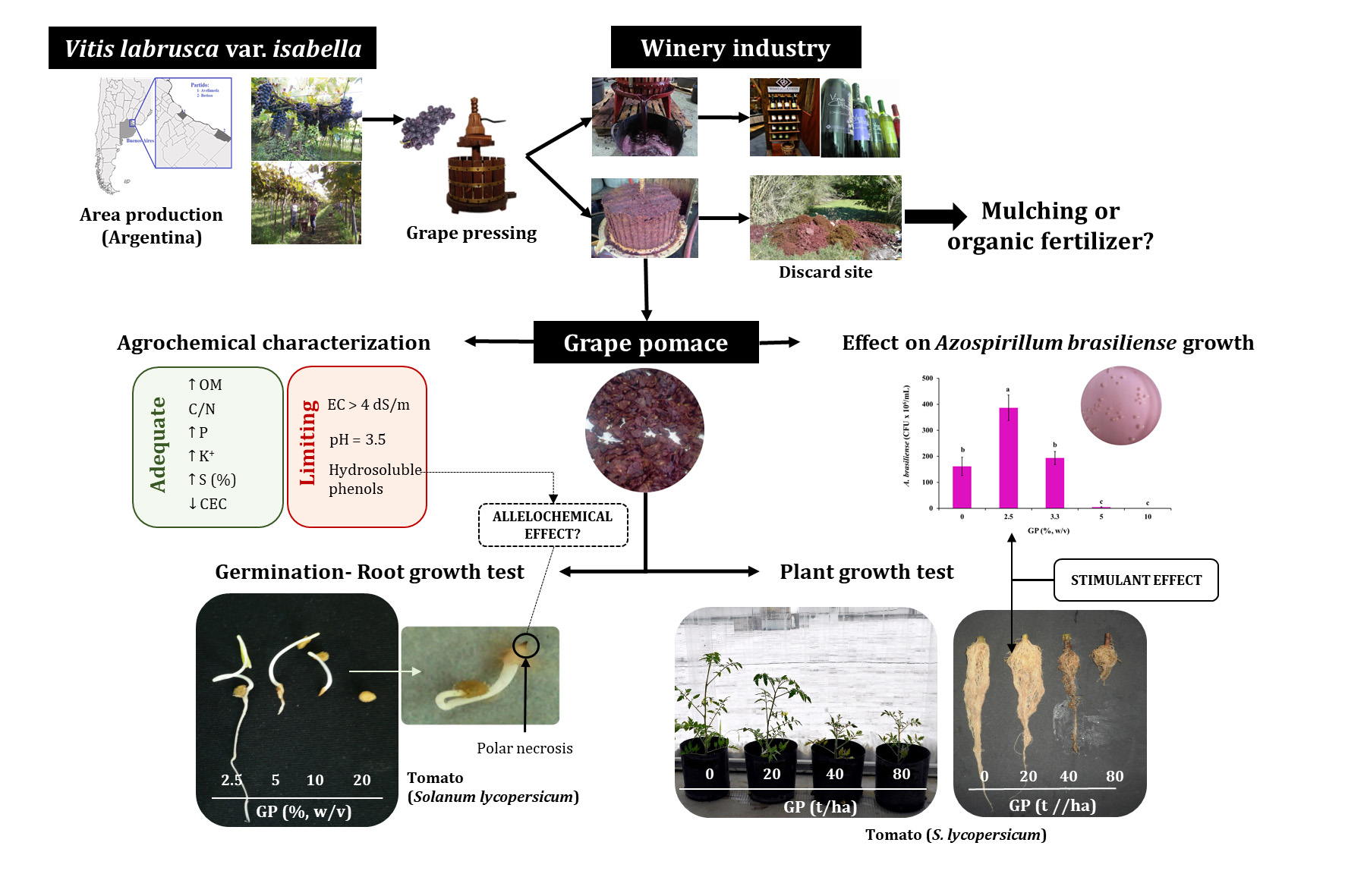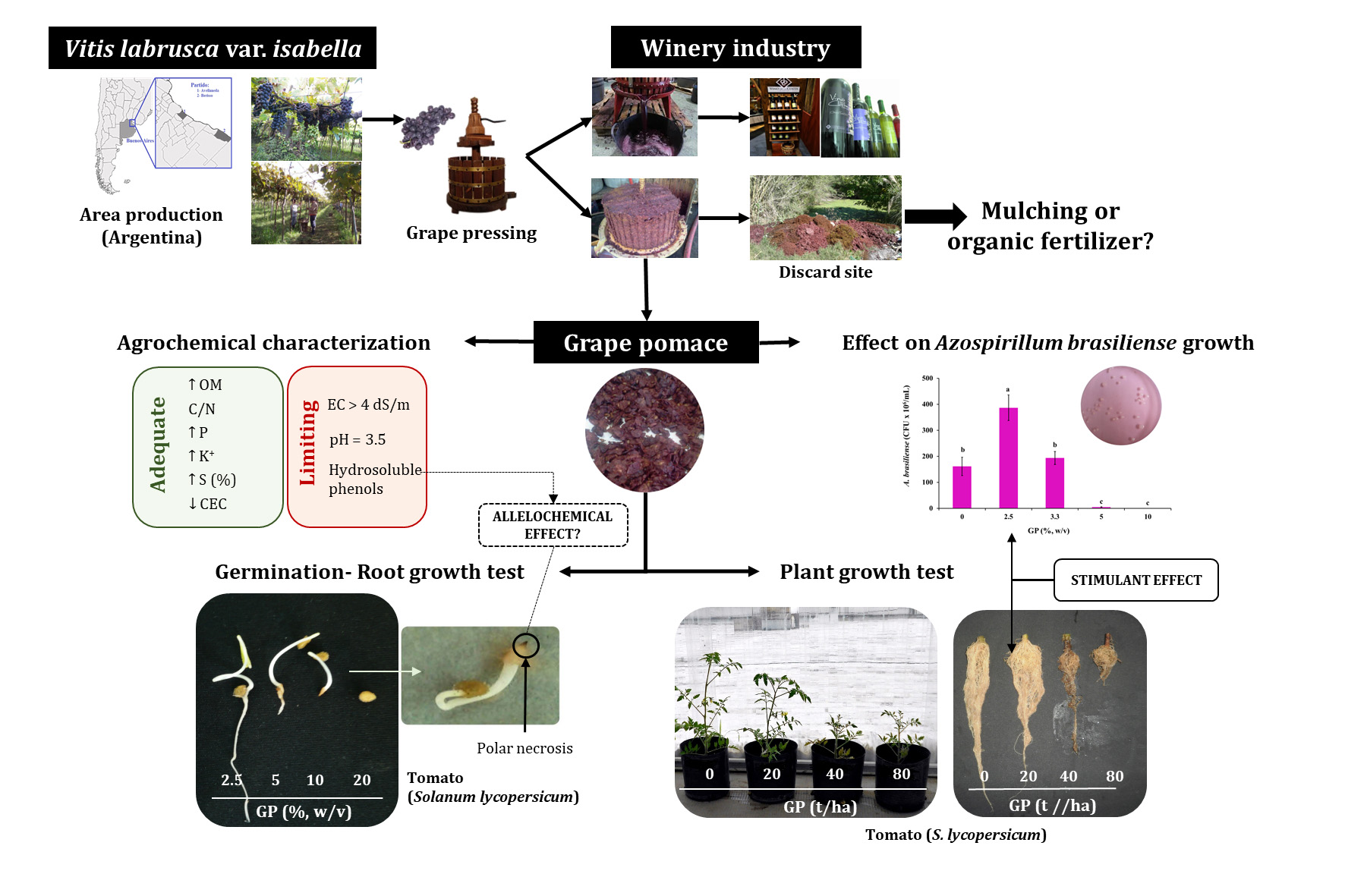Agrochemical characterization of Vitis labrusca grape pomace and its effect on a soil-plant system
DOI:
https://doi.org/10.48162/rev.39.122Palabras clave:
residuo agronómico, revalorización, macronutrientes, Azospirillum brasilense, tomate, lechugaResumen

This study characterized the agrochemical properties of V. labrusca grape pomace (GP) and evaluated the effect on the rhizobacteria Azospirillum brasiliense and horticultural
crops, determining safety as fertilizer and/or mulching. Two first bioassays were performed with the GP at different concentrations evaluating toxicity on A. brasiliense, and on tomato and lettuce seeds. A third bioassay evaluated GP mulching effects on tomato and lettuce plants growing with amounts varying between 20 and 80 t ha-1. Agrochemical characterization showed that GP is rich in potassium and phosphorus, with a low content of Na+ salts (SAR < 15). The GP at 2.5% (w v-1) significantly increased survival rates of N2-fixing rhizobacteria. Results on seed germination revealed lettuce was more susceptible to increasing GP concentrations. The application of 20 t ha-1 of GP in greenhouse experiments increased lettuce and tomato root biomass. Furthermore, the aerial part of tomato showed no toxicity symptoms. These results open the possibility of considering V. labrusca GP as mulching without prior treatment in tomato crops.
Highlights:
- Physico-chemical properties of labrusca GP were determined for the first time.
- labrusca GP is rich in K and P.
- labrusca GP at low doses promotes A. brasiliensis growth.
- labrusca GP at the lowest doses favored root growth in tomato plants.
- GP could be considered as mulching.

Descargas
Publicado
Número
Sección
Licencia
Derechos de autor 2018 Revista de la Facultad de Ciencias Agrarias UNCuyo

Esta obra está bajo una licencia internacional Creative Commons Reconocimiento-NoComercial-CompartirIgual 3.0.
Aquellos autores/as que tengan publicaciones con esta revista, aceptan las Políticas Editoriales.



